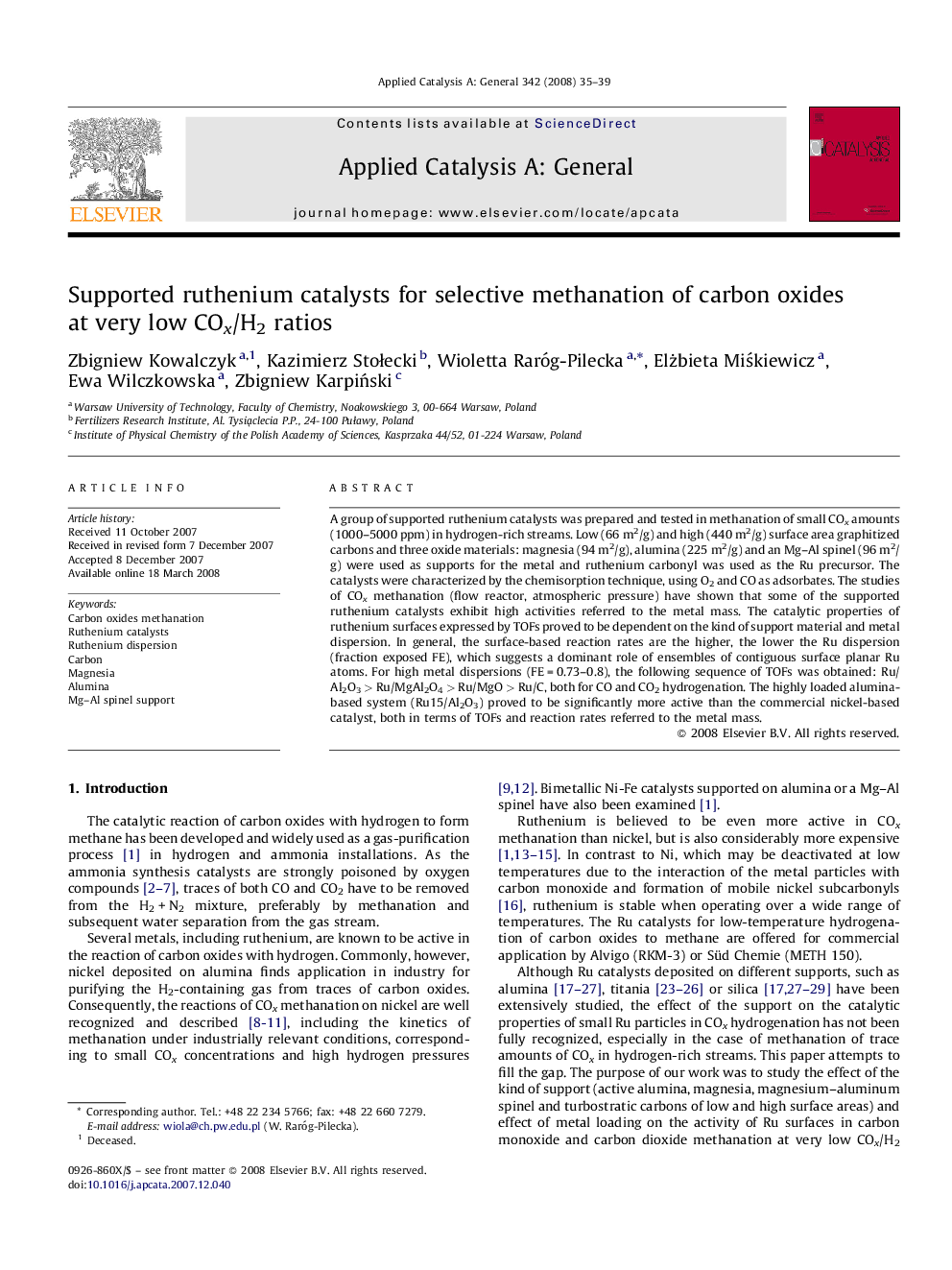| کد مقاله | کد نشریه | سال انتشار | مقاله انگلیسی | نسخه تمام متن |
|---|---|---|---|---|
| 43010 | 45951 | 2008 | 5 صفحه PDF | دانلود رایگان |

A group of supported ruthenium catalysts was prepared and tested in methanation of small COx amounts (1000–5000 ppm) in hydrogen-rich streams. Low (66 m2/g) and high (440 m2/g) surface area graphitized carbons and three oxide materials: magnesia (94 m2/g), alumina (225 m2/g) and an Mg–Al spinel (96 m2/g) were used as supports for the metal and ruthenium carbonyl was used as the Ru precursor. The catalysts were characterized by the chemisorption technique, using O2 and CO as adsorbates. The studies of COx methanation (flow reactor, atmospheric pressure) have shown that some of the supported ruthenium catalysts exhibit high activities referred to the metal mass. The catalytic properties of ruthenium surfaces expressed by TOFs proved to be dependent on the kind of support material and metal dispersion. In general, the surface-based reaction rates are the higher, the lower the Ru dispersion (fraction exposed FE), which suggests a dominant role of ensembles of contiguous surface planar Ru atoms. For high metal dispersions (FE = 0.73–0.8), the following sequence of TOFs was obtained: Ru/Al2O3 > Ru/MgAl2O4 > Ru/MgO > Ru/C, both for CO and CO2 hydrogenation. The highly loaded alumina-based system (Ru15/Al2O3) proved to be significantly more active than the commercial nickel-based catalyst, both in terms of TOFs and reaction rates referred to the metal mass.
A group of supported ruthenium catalysts was characterized (O2, CO chemisorption) and tested in methanation of small COx amounts (1000–5000 ppm) in H2-rich streams. The surface-based reaction rates (TOF) of methanation proved to be dependent on the kind of support material (graphitized carbon, alumina, magnesia and Mg–Al spinel) and metal dispersion. For high Ru dispersions (0.73–0.8) the following sequence of TOFs was obtained: Ru/Al2O3 > Ru/Mg–Al > Ru/MgO > Ru/C both for CO and CO2 hydrogenation. The 15%Ru/Al2O3 system was found to be significantly more active than the commercial Ni-based catalyst.Figure optionsDownload as PowerPoint slide
Journal: Applied Catalysis A: General - Volume 342, Issues 1–2, 30 June 2008, Pages 35–39